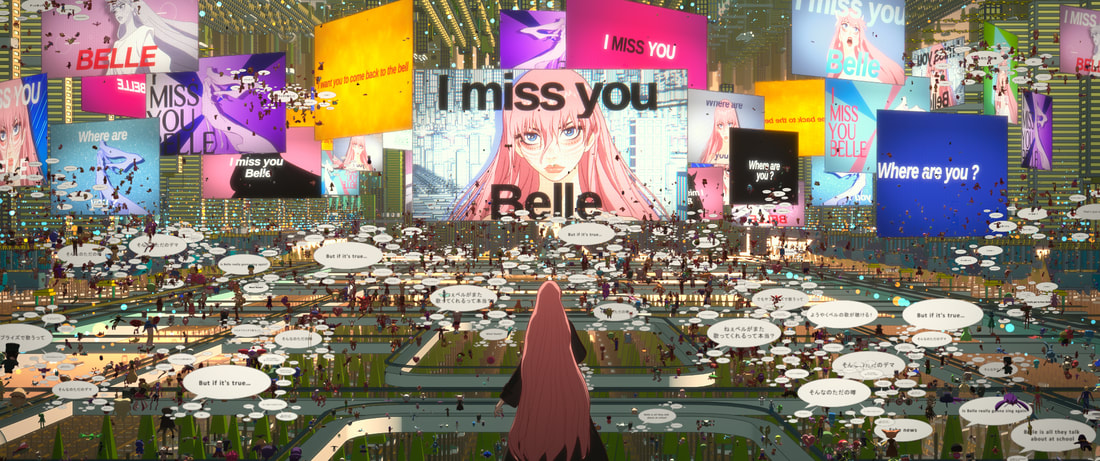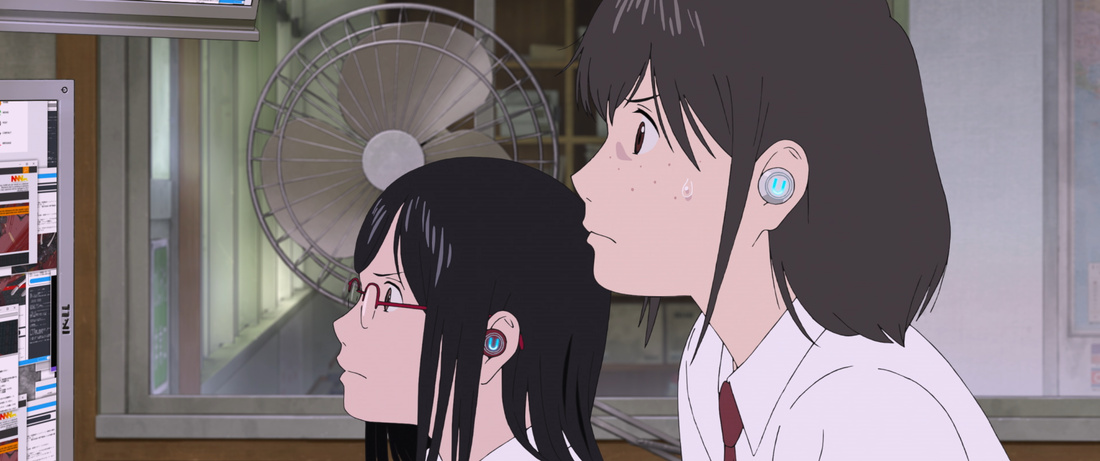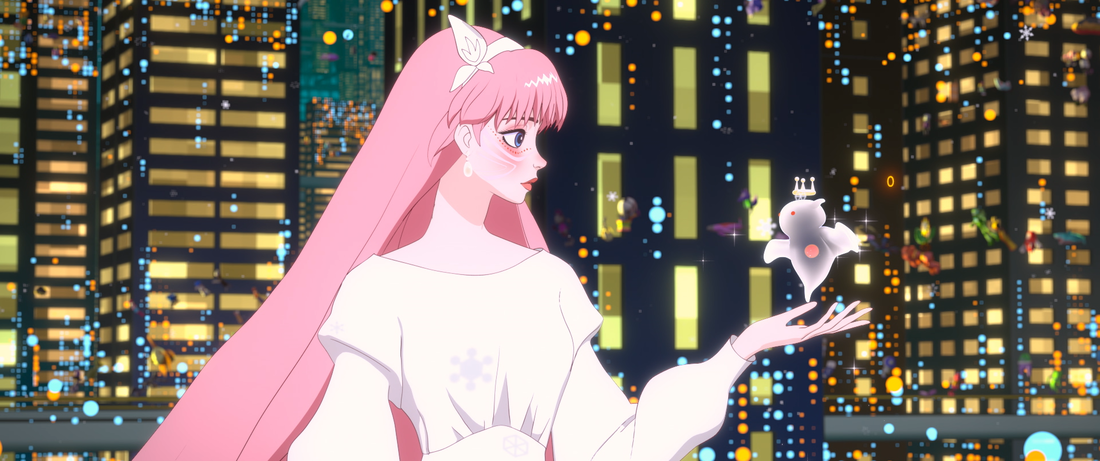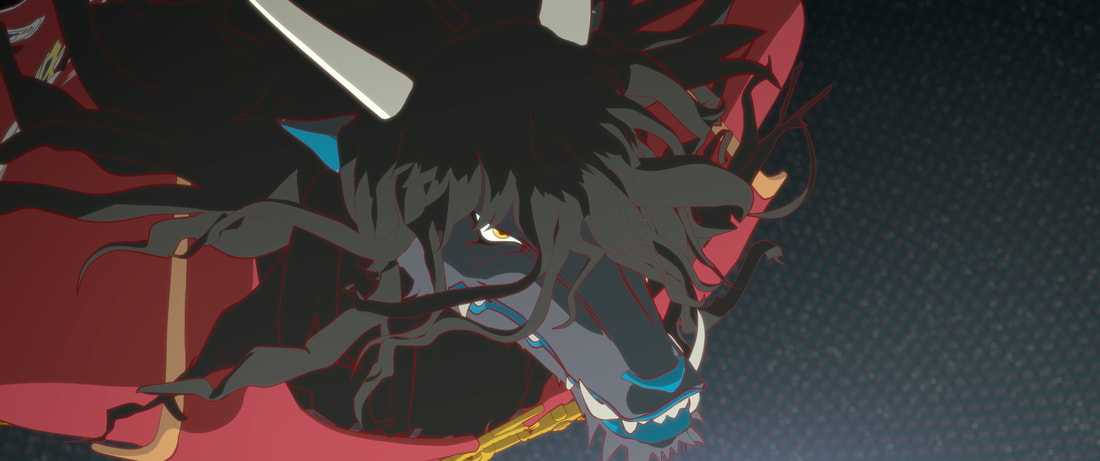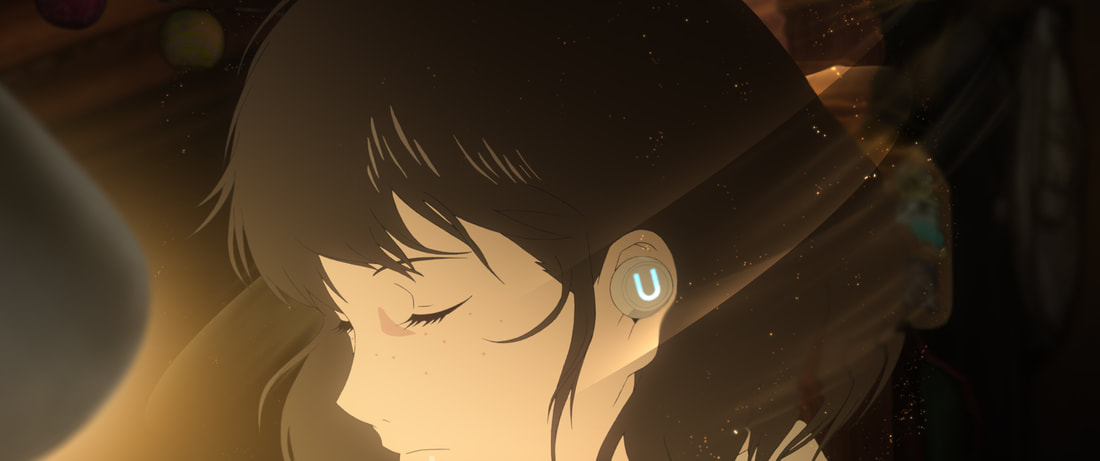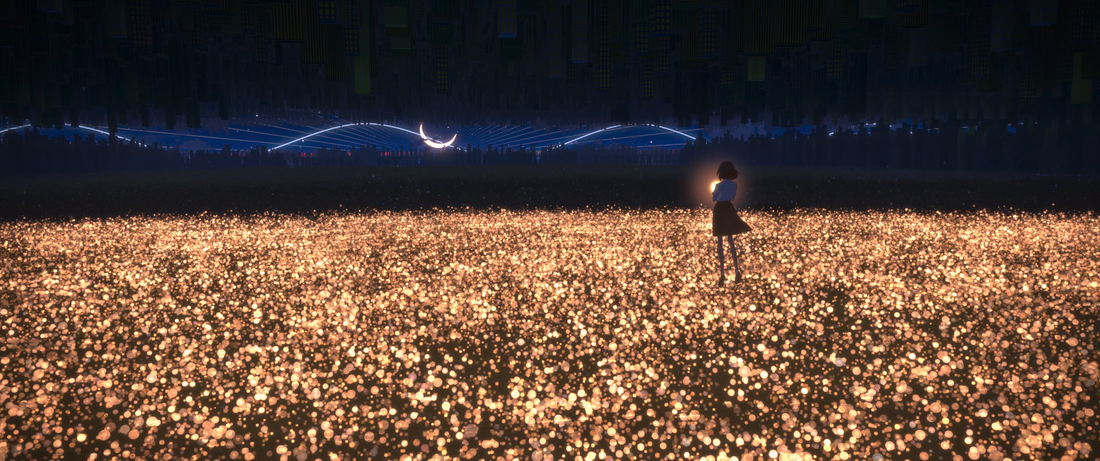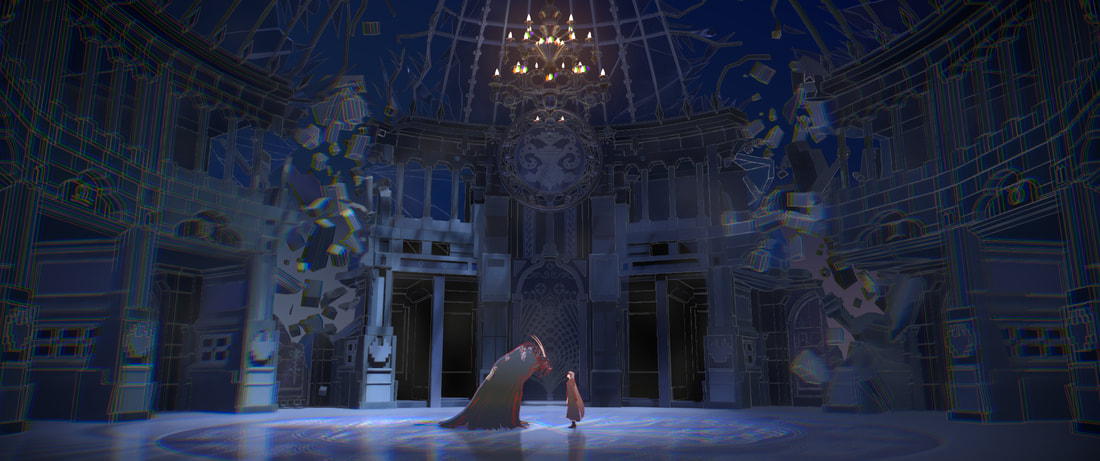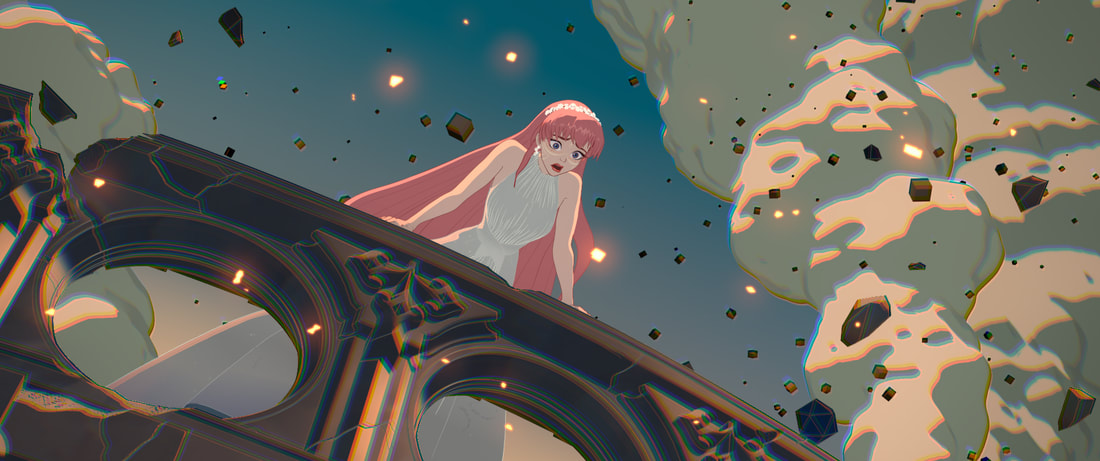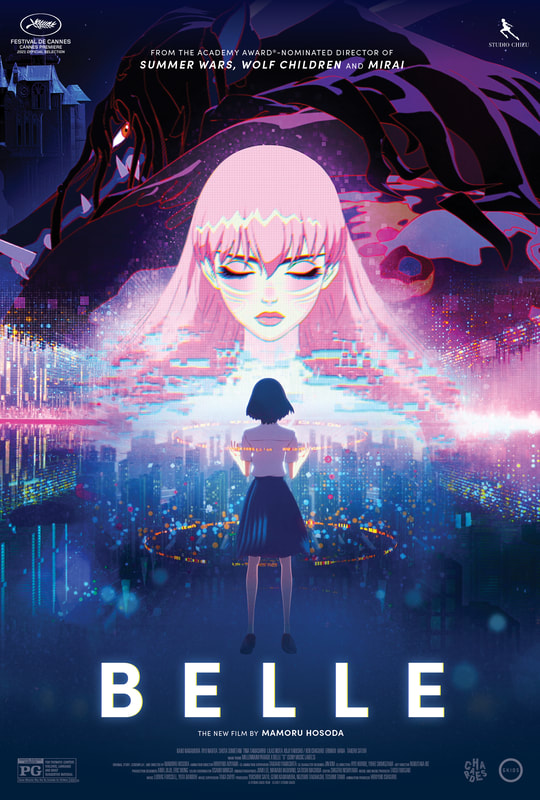|
When it comes to fairy tales, setting is key. Fairy tales don’t have to take place in the past or in distant kingdoms, but their settings should invoke a sense of wonder and enchantment. The setting of a fairy tale should work alongside the other thematic elements to draw out and challenge the hero’s best and worst character traits. And if there’s any place where we’ve seen the best and worst of people over the past few years, it’s been right here on the internet. Therefore, it’s no surprise that writer/director Mamoru Hosoda chose to set his 21st-century adaptation of a classic fairytale in a bustling and vibrant virtual world. With a little help from VR technology, the heroine of the story, Belle, can be whoever she wants to be — and her counterpart, “the beast,” can hide his true identity behind a curated “tough guy” internet persona. Belle is a rich, detailed, and ambitious film that’s part fairy tale, part coming-of-age story, and part VR adventure. Hosoda has directed a number of notable animated features during his career, including The Girl Who Leapt Through Time, Summer Wars, Wolf Children, The Boy and the Beast, and Mirai. His work on Belle sets the standard for excellence and artistry in contemporary animated feature films. Belle is truly a beauty from start to finish — but its jagged leaps between reality and virtual reality, along with its loyalty to recognizable imagery from past adaptations of Beauty and the Beast, may cause some viewers to lose interest. Belle is a movie made up of remarkable individual parts that don’t fit together as nicely as they should. Teenage Suzu is practically invisible in the sea of faces at her school. But when she joins U, an immersive virtual reality platform with millions of users from around the world, she becomes an overnight pop sensation. Suddenly, everyone around her recognizes her name and face — her virtual name and face, that is. U allows Suzu and other users to start fresh by taking on a new identity and using an avatar that embodies their hidden strengths. Suzu names her avatar “Belle” and wows the VR world with her stunning singing voice, a gift that she hasn’t been able to share with the real world since a traumatic accident during her childhood. But when one of her online concerts is interrupted by a rogue U user known only as “the beast,” Belle realizes that the metaverse isn’t all fun and games. Intrigued by the beast and the mysterious bruises on his back, Belle sets out on a virtual quest to discover his true identity. Meanwhile, in the real world, she still has to navigate the ups and downs of life as an ordinary teenager. Belle is a modern retelling of a well-known fairy tale set against a breathtaking and beautiful backdrop. It brings all our hopes and fantasies about virtual reality and the metaverse to life. There are three distinct spaces within Belle: the lush green countryside in the real world, the futuristic cityscape of U, and the fantastical outskirts of U where the beast lurks in his foreboding fortress. All three spaces are incredibly detailed and beautiful. The skilled animators successfully draw us into the story with intricate imagery that speaks volumes about Suzu’s inner conflicts, especially in the real-world space. Repeated images like Suzu’s chipped pink coffee mug, the bridge that she crosses every day on her way to school, and the tiny U earpieces that transport her into the metaverse all work together to form a distinct and believable reality where nature and technology interact. Similarly, the stunning score brings out the best in the story, romanticizing the beauty and adventurousness of the digital world. The initial “transformation” scene, in which Suzu becomes Belle and enters the world of U for the first time, is certainly beautiful on its own — but the driving score endows this scene with a sense of fantastical wonder, making it one of the most memorable sequences in the movie. After Suzu enters U, the movie brings the excitement and dangers of social media to life by filling the screen with eye-grabbing text bubbles and pop-ups. In one scene, one of Belle’s haters is literally drowned in a flood of disapproving comments that overtake her avatar until she finally disappears from view. But not all the visual aspects of Belle are quite that strong. When Belle sets off on her journey to find the beast’s hideaway within U, there’s a sudden, palpable change in the tone and visual style of the film. The wondrous and unique world of U is abruptly stripped away and replaced by blatant visual references to Disney’s Beauty and the Beast and other cinematic adaptations of the fairy tale. The animations in this section of the movie are still masterful and beautiful, but the details are so similar to those in the Disney version that Belle suddenly feels like a cheap knockoff rather than a creative adaptation. When Belle suddenly dons a dark cape and ties her hair back in a low ponytail, she’s no longer the unique metaverse popstar that we grew to love in the first section of the film. Instead, she’s an uninspiring imitation of the Disney version of Belle. When Belle and the beast dance in his castle, we’re no longer watching a complex coming-of-age adventure about social media and identity. Instead, we’re watching a copycat version of the famous ballroom sequence from the Disney movie. Belle starts out as such a strong, nuanced, and unique fairy tale adaptation that it’s frustrating and disappointing when it suddenly becomes dependent on recognizable Disney imagery. Belle doesn’t need all those heavy-handed visual references to Disney’s Beauty and the Beast, nor does it need to rely on the themes of the original fairy tale as strictly as it does. Despite the fact that the beast selfishly and rudely interrupts Belle’s concert, Belle becomes obsessed with him almost instantly. She’s immediately intrigued by his bad-boy persona and the mysterious bruises on his back. She inexplicably idolizes and romanticizes the dark villain — an obsession that doesn’t fit Suzu’s overall character. Plus, since Suzu is leading a double life and developing friendships in the real world and in U, there’s not enough time in the movie for all those relationships to develop realistically — especially her relationship with the beast. Surely, when Hosoda decided to write a Beauty and the Beast adaptation so modern and advanced that it takes place in the metaverse, he could have left out the whole problematic issue of romanticized Stockholm Syndrome and replaced it with nuanced and developed representations of friendship and romance. Granted, the themes of the movie get better as the story unfolds — but the sudden, jarring transition from “futuristic teen movie” to “fairy tale adaptation” creates a giant hiccup that disrupts the tone of the film. The three spaces within Belle (the real world, the VR world, and the fairy tale world) aren’t as cohesive as they could have been, making the movie feel disconnected and, at times, difficult to follow. But Belle offers more than its fair share of breathtaking moments, and it has a lot to say about social media and online personas. Belle opens the door to a whole new world of VR fairy tales and coming of age stories, and I can’t wait to see what comes next. For ticket information, visit the Belle official website.
0 Comments
Leave a Reply. |
"Our embodied spectator, possibly perverse in her fantasies and diverse in her experience, possesses agency...finally, she must now be held accountable for it." Categories
All
|

